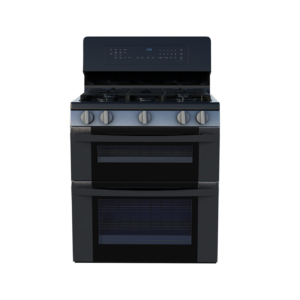Washer electrical and panel systems play a crucial role in the overall performance of your washing machine. These systems are responsible for powering and controlling the various functions of the washer, ensuring that it operates efficiently and effectively. Without a properly functioning electrical and panel system, your washer may experience issues such as failure to turn on, incomplete cycles, strange noises or smells, and error codes on the control panel.
Maintaining these systems is essential to ensure that your washer operates at its best. Regular maintenance and prompt repairs can help prevent major breakdowns and extend the lifespan of your appliance. By understanding the common causes of washer electrical and panel problems, as well as the signs to look out for, you can take proactive steps to address any issues that arise.
Key Takeaways
- Washer electrical and panel systems are crucial for the proper functioning of your washing machine.
- Common causes of washer electrical and panel problems include power surges, faulty wiring, and worn-out components.
- Signs of washer electrical and panel issues include the machine not turning on, tripping circuit breakers, and erratic behavior.
- You can check for electrical problems in your washer by inspecting the power cord, outlet, and fuses.
- Troubleshooting washer panel problems involves checking for loose connections, damaged wires, and faulty switches.
Common Causes of Washer Electrical and Panel Problems
There are several common causes of washer electrical and panel problems that can affect the performance of your appliance. One common cause is overloading the washer. Overloading puts excessive strain on the electrical components and can lead to issues such as blown fuses or tripped circuit breakers. It’s important to follow the manufacturer’s guidelines for load capacity to avoid overloading your washer.
Power surges are another common cause of electrical problems in washers. Sudden spikes in voltage can damage sensitive electronic components, including those in the washer’s electrical and panel systems. Using surge protectors or unplugging your washer during storms or power outages can help protect against power surges.
Age and wear and tear can also contribute to electrical and panel problems in washers. Over time, wires may become frayed or connectors may become loose, leading to issues with power supply or control signals. Additionally, the control board or motor may wear out over time, requiring replacement.
Improper installation can also lead to electrical and panel problems in washers. If the wiring is not properly connected or if the washer is not grounded correctly, it can result in issues with the electrical and panel systems. It’s important to ensure that your washer is installed correctly to avoid these problems.
Signs of Washer Electrical and Panel Issues
There are several signs that may indicate electrical and panel issues in your washer. One common sign is the washer not turning on at all. If you press the power button and nothing happens, it could be a sign of a problem with the electrical supply or the control panel.
Another sign is the washer not completing cycles. If your washer starts a cycle but stops before it finishes, it could be due to an issue with the control panel or a faulty electrical component.
Strange noises or smells coming from your washer can also be a sign of electrical or panel problems. These issues may indicate that there is a loose connection or a damaged component within the electrical system.
Error codes on the control panel are another indication of potential electrical or panel issues. These codes are designed to alert you to specific problems with your washer, such as a faulty sensor or a communication error between components.
How to Check for Electrical Problems in Your Washer
If you suspect that your washer has electrical problems, there are several steps you can take to check for issues. First, unplug the washer from the power outlet. This will ensure your safety while you inspect the electrical components.
Next, check the power outlet itself. Plug in another device, such as a lamp or phone charger, to see if it receives power. If the outlet is not working, you may need to reset the circuit breaker or replace a blown fuse.
Inspect the power cord for any visible damage, such as frayed wires or exposed insulation. If you notice any issues, it’s important to replace the power cord to prevent further damage or safety hazards.
Finally, test the door switch to ensure that it is functioning properly. The door switch is a safety feature that prevents the washer from operating when the door is open. Use a multimeter to test the continuity of the switch. If it does not show continuity when the door is closed, it may need to be replaced.
Troubleshooting Washer Panel Problems
If you suspect that your washer has panel problems, there are several troubleshooting steps you can take. First, try resetting the control panel. This can often resolve minor issues and restore normal operation. Consult your washer’s manual for instructions on how to reset the control panel.
Next, check for loose connections within the control panel. Turn off the power to the washer and remove the control panel cover. Inspect the connections between the control board and other components, such as switches and sensors. Tighten any loose connections and ensure that all wires are securely attached.
Inspect the control board itself for any signs of damage, such as burnt or discolored components. If you notice any issues, it may be necessary to replace the control board. Consult a professional or refer to your washer’s manual for guidance on how to replace the control board.
Washer Fuses and Circuit Breakers: How to Test and Replace Them

Washer electrical systems often include fuses and circuit breakers as safety measures to protect against power surges and electrical faults. Fuses are designed to blow when there is an excessive current flow, while circuit breakers trip when there is a fault in the electrical system.
To test a fuse, you will need a multimeter. Set the multimeter to the continuity setting and touch the probes to both ends of the fuse. If there is continuity, the fuse is still intact. If there is no continuity, it means that the fuse has blown and needs to be replaced.
To test a circuit breaker, first turn off all power to your washer. Locate the circuit breaker panel in your home and find the breaker that corresponds to your washer. Flip the breaker to the off position and then back on. If it stays in the on position, the breaker is functioning properly. If it trips again immediately or shortly after resetting, there may be a fault in the electrical system that needs to be addressed.
To replace a blown fuse, first unplug your washer and locate the fuse panel. Remove the blown fuse and replace it with a new one of the same rating. Make sure to use the correct type of fuse as specified by the manufacturer.
To reset a tripped circuit breaker, first turn off all power to your washer. Locate the circuit breaker panel in your home and find the breaker that corresponds to your washer. Flip the breaker to the off position and then back on. If it stays in the on position, the breaker has been reset.
How to Test and Replace Washer Wiring and Connectors
If you suspect that there are issues with the wiring or connectors in your washer, there are steps you can take to test and replace them. First, visually inspect the wiring for any signs of damage, such as frayed or exposed wires. If you notice any issues, it’s important to replace the damaged wiring to prevent further damage or safety hazards.
To test the wiring, you will need a multimeter. Set the multimeter to the continuity setting and touch the probes to both ends of the wire. If there is continuity, it means that the wire is intact and functioning properly. If there is no continuity, it means that there is a break in the wire and it needs to be replaced.
To replace damaged wiring or connectors, first unplug your washer and turn off all power to the appliance. Remove any covers or panels necessary to access the wiring or connectors. Disconnect any connectors by gently pulling them apart or using a small screwdriver to release any locking mechanisms. Remove any damaged wiring and replace it with new wiring of the same gauge and type. Reconnect any connectors and ensure that they are securely attached.
Diagnosing and Fixing Washer Control Board Issues
The control board is a vital component of the washer’s electrical and panel system. It is responsible for controlling the various functions of the washer, such as water temperature, cycle selection, and timing. If the control board is faulty, it can lead to issues with the washer’s performance.
To diagnose control board issues, first unplug your washer and turn off all power to the appliance. Remove any covers or panels necessary to access the control board. Inspect the control board for any signs of damage, such as burnt or discolored components. If you notice any issues, it may be necessary to replace the control board.
To replace a faulty control board, consult a professional or refer to your washer’s manual for guidance. Disconnect any connectors or wiring attached to the control board and remove it from the appliance. Install the new control board by connecting any connectors or wiring and securing it in place. Replace any covers or panels that were removed and restore power to the washer.
Washer Motor Problems: Diagnosis and Repair
The motor is another important component of the washer’s electrical system. It is responsible for driving the drum and agitator, allowing the washer to perform its cleaning functions. If the motor is faulty, it can result in issues such as a washer that won’t spin or agitate.
To diagnose motor issues, first unplug your washer and turn off all power to the appliance. Remove any covers or panels necessary to access the motor. Inspect the motor for any signs of damage, such as burnt or discolored components. If you notice any issues, it may be necessary to replace the motor.
To replace a faulty motor, consult a professional or refer to your washer’s manual for guidance. Disconnect any connectors or wiring attached to the motor and remove it from the appliance. Install the new motor by connecting any connectors or wiring and securing it in place. Replace any covers or panels that were removed and restore power to the washer.
When to Call a Professional for Washer Electrical and Panel Repairs
While many washer electrical and panel issues can be diagnosed and repaired by homeowners, there are times when it is best to call a professional for assistance. Complex issues, such as control board or motor problems, may require specialized knowledge and tools to diagnose and repair. Additionally, if you do not have experience working with electrical systems, it is best to leave the repairs to a qualified technician.
There are also signs that indicate the need for professional repairs. If you notice any of the following issues, it is important to call a professional:
– Sparks or smoke coming from your washer
– A burning smell when the washer is in use
– Excessive heat coming from the washer
– Water leaking from the washer’s electrical components
Hiring a qualified and experienced technician for washer electrical and panel repairs is important to ensure that the repairs are done correctly and safely. They will have the knowledge, skills, and tools necessary to diagnose and repair complex issues, minimizing the risk of further damage or safety hazards.
In conclusion, maintaining the electrical and panel systems of your washer is crucial for optimal performance. By understanding the common causes of problems, signs to look out for, and troubleshooting steps, you can save money and time on repairs. However, if you encounter complex issues or lack the necessary skills and tools, it’s best to call a professional for assistance. Taking care of your washer’s electrical and panel systems will help ensure that your appliance operates efficiently and effectively for years to come.
If you’re experiencing issues with your washer not starting, it’s important to diagnose the electrical and panel problems that may be causing the malfunction. In order to troubleshoot these issues effectively, it’s helpful to have a comprehensive understanding of your washer’s electrical system and control panel. For more information on this topic, check out this informative article on 911 Appliance’s website: When Your Washer Won’t Start: Diagnosing Electrical and Panel Problems. This article provides valuable insights and tips to help you identify and resolve common electrical and panel problems that may be preventing your washer from starting.
Are Fabric Softener Faults Related to Washer Electrical and Panel Problems?
When diagnosing fabric softener faults, it’s essential to consider potential washer electrical and panel problems. Issues such as faulty connections, damaged circuits, or malfunctioning control panels could be the root cause of fabric softener dispenser malfunctions. Consult a qualified technician to troubleshoot and resolve these issues effectively.



